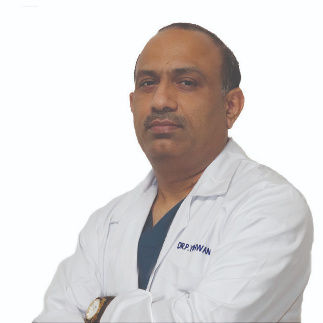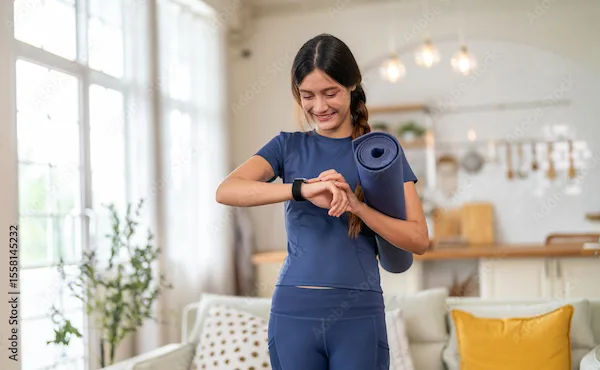Understanding Ligament Injuries
Understand ligament injuries, their causes, symptoms, and treatment options. Learn how proper diagnosis and rehabilitation can aid recovery and prevent long-term joint instability or recurring injuries.

Written by Dr. Mohammed Kamran
Reviewed by Dr. D Bhanu Prakash MBBS, AFIH, Advanced certificate in critical care medicine, Fellowship in critical care medicine
Last updated on 6th Aug, 2025

Ligament injuries are common, especially among athletes and active individuals, but they can happen to anyone. Whether it’s a sprained ankle from a misstep or a more serious knee injury, ligament damage can be painful and limit mobility. If you or someone you know is dealing with a ligament injury, this guide will help you understand what it is, how it happens, and what you can do to recover effectively.
What Are Ligaments?
Ligaments are strong, flexible bands of tissue that connect bones to each other, providing stability to joints. Unlike muscles, which help in movement, ligaments ensure that joints don’t move beyond their normal range. Common areas where ligament injuries occur include the knees (ACL, PCL, MCL, LCL), ankles, wrists, and shoulders.
Types of Ligament Injuries
Ligament injuries are often classified into three grades based on severity:
1. Grade 1 (Mild Sprain): The ligament is stretched but not torn. Mild pain and swelling may occur, but joint stability remains intact.
2. Grade 2 (Moderate Sprain): A partial tear of the ligament, leading to noticeable swelling, bruising, and difficulty moving the joint.
3. Grade 3 (Severe Sprain or Complete Tear): The ligament is completely torn, causing severe pain, instability, and inability to bear weight on the affected joint.
Common Causes of Ligament Injuries
Ligament injuries usually happen due to sudden stress or trauma, such as:
Sudden twists or falls (e.g., ankle sprain while walking on uneven ground)
Sports injuries (e.g., ACL tear from sudden stops or direction changes)
Car accidents or high-impact collisions
Overuse or repetitive stress (common in athletes)
Poor posture or weak muscles increasing joint strain
Symptoms of a Ligament Injury
If you’ve injured a ligament, you may experience:
Pain (sharp or throbbing, worsening with movement)
Swelling and bruising around the joint
Difficulty moving the joint or feeling unstable
A popping sound at the time of injury (common in severe tears)
Weakness or inability to bear weight
How Are Ligament Injuries Diagnosed?
If you suspect a ligament injury, a doctor will:
1. Examine the joint for swelling, tenderness, and range of motion.
2. Perform imaging tests like X-rays (to rule out fractures) or MRI (to assess ligament damage).
3. Conduct stress tests (gently moving the joint to check stability).
If needed, you can book a consultation with an orthopaedic specialist through Apollo 24|7 for a proper diagnosis and treatment plan.
Treatment Options for Ligament Injuries
Treatment depends on the severity of the injury:
1. Home Care (For Mild to Moderate Injuries: Grade 1 & 2)
R.I.C.E. Method
Rest: Avoid putting weight on the injured joint.
Ice: Apply ice packs for 15-20 minutes every 2-3 hours to reduce swelling.
Compression: Use an elastic bandage to support the joint.
Elevation: Keep the injured area raised above heart level to minimise swelling.
Pain Relief: Over-the-counter medications like ibuprofen can help with pain and inflammation.
Gentle Movement: Once swelling reduces, light exercises can prevent stiffness.
Consult Top Specialists To Treat Your Ligament Issue
2. Medical Treatment (For Severe Injuries: Grade 3)
Bracing or Splinting: Helps stabilise the joint during healing.
Physical Therapy: Strengthens muscles around the joint to improve stability.
Surgery (In Some Cases): Needed for complete tears, especially in athletes.
Recovery and Rehabilitation
Recovering from a ligament injury takes time and patience. Here’s how to speed up healing:
Follow Your Doctor’s Advice: Stick to prescribed exercises and avoid rushing back to activity.
Strengthen Surrounding Muscles: Physical therapy helps prevent future injuries.
Wear Supportive Gear: Braces or taping can provide extra stability.
Gradually Return to Activity: Avoid high-impact movements until fully healed.
Preventing Ligament Injuries
While accidents happen, you can reduce the risk by:
Warming up before exercise to improve flexibility.
Wearing proper footwear with good ankle support.
Strengthening muscles around joints through regular exercise.
Avoiding sudden, jerky movements during sports.
When to See a Doctor?
Seek medical help if:
Pain and swelling don’t improve in a few days.
The joint feels unstable or gives way.
You can’t bear weight on the injured limb.
If you’re unsure about your symptoms, schedule a consultation with an orthopaedic specialist on Apollo 24|7 for expert advice.
Conclusion
Ligament injuries can be painful and frustrating, but with proper care, most people recover fully. Early treatment, rest, and rehabilitation are key to regaining strength and mobility. If you suspect a serious injury, don’t hesitate to seek medical help.
Consult Top Specialists
Consult Top Specialists To Treat Your Ligament Issue

Dr. Manoj Dinkar
Orthopaedician
15 Years • MBBS, Dip (Orthopaedics)
New Delhi
THE DOCTORS NESST, New Delhi

Dr. Prashant Kumar
Orthopaedician
9 Years • MBBS,MS Orthopaedics, DNB Orthopaedics
Kolkata
Doctor's World, Kolkata

Dr. Keshav Digga
Orthopaedician
14 Years • MBBS, MS Orthopaedics, FIASM, FIMISS
Kolkata
DIGGA HEALTHCARE, Kolkata

Dr. Anil Pradeep Jadhav
Orthopaedician
23 Years • MBBS MS (Ortho)
Nashik
Apollo Hospitals Nashik, Nashik
(25+ Patients)

Dr. Bhanu Prakash Reddy Rachamallu
Orthopaedician
24 Years • MBBS , D'ORTHO, DNB (ORTHO), Mch (ORTHO), Fellow in ARTHROPLASTY
Hyderabad
Apollo Hospitals Jubilee Hills, Hyderabad
(75+ Patients)
Consult Top Specialists

Dr. Manoj Dinkar
Orthopaedician
15 Years • MBBS, Dip (Orthopaedics)
New Delhi
THE DOCTORS NESST, New Delhi

Dr. Prashant Kumar
Orthopaedician
9 Years • MBBS,MS Orthopaedics, DNB Orthopaedics
Kolkata
Doctor's World, Kolkata

Dr. Keshav Digga
Orthopaedician
14 Years • MBBS, MS Orthopaedics, FIASM, FIMISS
Kolkata
DIGGA HEALTHCARE, Kolkata

Dr. Anil Pradeep Jadhav
Orthopaedician
23 Years • MBBS MS (Ortho)
Nashik
Apollo Hospitals Nashik, Nashik
(25+ Patients)

Dr. Bhanu Prakash Reddy Rachamallu
Orthopaedician
24 Years • MBBS , D'ORTHO, DNB (ORTHO), Mch (ORTHO), Fellow in ARTHROPLASTY
Hyderabad
Apollo Hospitals Jubilee Hills, Hyderabad
(75+ Patients)




